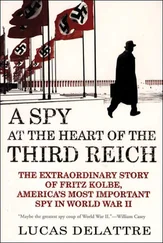Phoney intelligence particularly affected Riga, the most productive of SIS’s stations in the region. Its best agent was a local Russian journalist who supposedly ran a network of eleven sub-sources. An investigation in 1928 concluded that many if not most were bogus: producing entirely imaginary information, for example, about a Russian ‘death ray’. [49] aw It is tempting to speculate that this real-life example may have inspired Graham Greene, himself an SIS officer, with the mysterious giant suction device – in fact a domestic vacuum cleaner writ large – depicted in Our Man in Havana .
Reporting from Riga also led to one of the greatest howlers in the history of SIS. Published in the Daily Mail on 24 October 1924, it purported to be a letter from Grigori Zinoviev, president of the Comintern – the organisation through which the Bolshevik leadership coordinated its activities with foreign communist parties – urging the British Communist Party to lead an insurrection. The story came in the run-up to a general election in which Britain’s Labour Party, in office for the first time, in a minority government, was hoping to hold on to power. The letter was not decisive: though the Conservative party won the election, Labour’s vote went up. But many suspect that right-wing elements in SIS cooked up the ‘leaked’ letter, supposedly provided by a sub-agent called FR/3/Moscow, employed in the secretariat of the Comintern (the office which linked the Soviet leadership with foreign communist parties). Riga had filed it to London with a covering note 38flagging the ‘strong incitement to armed revolution’ and a ‘flagrant violation’ of the newly signed Anglo-Russian agreement. SIS also asserted that ‘the authenticity of the document is undoubted’. Worse, when the Foreign Office tried to verify the letter SIS claimed (probably falsely) that another agent had corroborated the content. The most elementary checks were missing. Had SIS obtained the letter in English or in Russian? Who exactly was the sub-agent? SIS was unable or unwilling to give firm clear answers and came close to outright lies. 39
The exceptions to this rather unimpressive performance came from British intelligence links with their local counterparts, especially in Estonia (history may not repeat itself, but it sometimes rhymes). An agent called ‘Baron’, run by Carr, reported the start of secret Nazi–Soviet negotiations in the spring of 1939, and confirmed in June that they were making good progress. But the desk officer at SIS headquarters in London refused to circulate this intelligence further, believing that the agent could not possibly have had the access necessary. 40It contradicted the Foreign Office line, that its envoy to Moscow Sir William Strang was making progress on an Anglo-Soviet agreement. The same fate befell another scoop a year later. Although SIS closed its Baltic stations in September 1940 following the Soviet annexation of Estonia, Latvia and Lithuania, many of the agent networks remained, mostly run from Helsinki. A British agent codenamed ‘Outcast’, formerly run from Tallinn, presented himself to the Helsinki station in September 1940. 41A Russian émigré living in Berlin (but with no love for the Nazis), he had escaped from Tallinn with German help, in return for agreeing to work for the Abwehr against Russia. Now he wanted to spy against them, for the British. In November 1940 he reported to his British case officer: ‘German command preparing (June) campaign against USSR.’ Sadly, Carr dismissed this as ‘incredible’ and probably mere propaganda.
Had politicians in London heeded the SIS sources and gained advance warning of the Hitler–Stalin pact, what could they have done? The deal was the culmination of a long period of diplomatic and political failure, in which Britain and France had been outmanoeuvred and Hitler had seen obstacles to his expansion plans melt one by one. It is hard to imagine even the most piercing intelligence insight reversing that. Nor is it easy to see what Britain would have done with the warning of Hitler’s assault on the Soviet Union. Stalin had plenty of warnings from other sources: he usually responded by punishing the messenger. Exercises in speculative history are as unrewarding as they are tempting. Yet it is hard not to feel frustration that such accurate intelligence went unnoticed. The wider lesson, if any, is that espionage is valuable only when decision-makers let the results change their thinking. Spies may provide confirmation only that the currents in the depths and shallows are similar. If they offer a different version of events, or prediction of them, officials and politicians must be willing to act on what they are told.
That is one weakness of Western intelligence even in the present day. Readers trying to understand why Russian spymasters so frequently run rings round their Western counterparts will also find it striking that so many other mistakes of the past are replicated so frequently. The tendency to pay good money for bad intelligence is deeply ingrained. Even after the fiascos of the early years, most intelligence from the interwar Baltic was barrel-scrapings, as this downbeat vignette illustrates.
Baltic agent ‘BP/24’ who was resident in Moscow and had ‘connections in Soviet institutions’, agreed for a retainer of £50 a month to ‘send information three times monthly’ about political matters and ‘on subject of propaganda’. After his own involvement with OGPU (who blackmailed him over gambling debts) was discovered, he was charged with treason but escaped to Austria, where he continued to peddle intelligence on Russia until the early 1930s. There he was reported to be employed by the Nazi Intelligence Office in Berlin and was offering reports to SIS though a mutual contact in Finland. By 1934 (as SIS discovered in 1946 from captured German documents) he had graduated to the Abwehr , was reporting to them on Russia and into the bargain had passed them an SIS questionnaire on Russia received from his Finnish contact. 42
If the later history of Western intelligence battles with Russia in the Baltic was ill-starred, one can at least say that it was part of a consistent pattern.
9
Between the Hammer and the Anvil
Carelessness, naiveté and wishful thinking were again on ample (and humiliating) display only twenty years later. The episode centred on the doomed underground struggle against communist rule in the Baltic states – one of the least-known chapters in modern European history. 1The names of the heroes and villains are unfamiliar; so too are the organisations they belonged to and the cause they espoused. But their death and destruction, the moral ambiguity and dilemmas that beset them, and the lethally unhelpful involvement of Western intelligence all deserve recognition. The central paradox was this: the goals of those resisting Soviet rule in the Baltic did not include gathering intelligence for Western spymasters, nor did their aims or origins make them ideal allies. But it was the spy agencies that offered them their only hope of outside support; and for all their faults, they were, at the start of the Cold War, a large part of the slender hand of cards that American and British intelligence could muster.
Intelligence links across the Baltic sea had reconnected during the war, in early 1943. The cooperation was controversial for both sides. The Soviet Union was still officially Britain’s ally and many of the Baltic agents were outspokenly anti-communist. Opinion on their side was divided. Many believed that the only hope of staving off another Soviet occupation was to intensify cooperation with the Germans. Others hoped that Britain would ditch its alliance with Stalin and rescue them as it had done in 1920. The first fruits of the connection were bitter. Evald Aruvald, then in the Estonian resistance, recalled: ‘We passed to the British… details of our strengths and positions at the front, hoping for assistance. The British, in turn, passed on this information to the Soviets.’ 2Colonel Alfons Rebane, a legendary Estonian officer who later worked for SIS, complained: ‘This damaged the Estonian people’s fight against our slave-masters the communists.’ 3
Читать дальше












